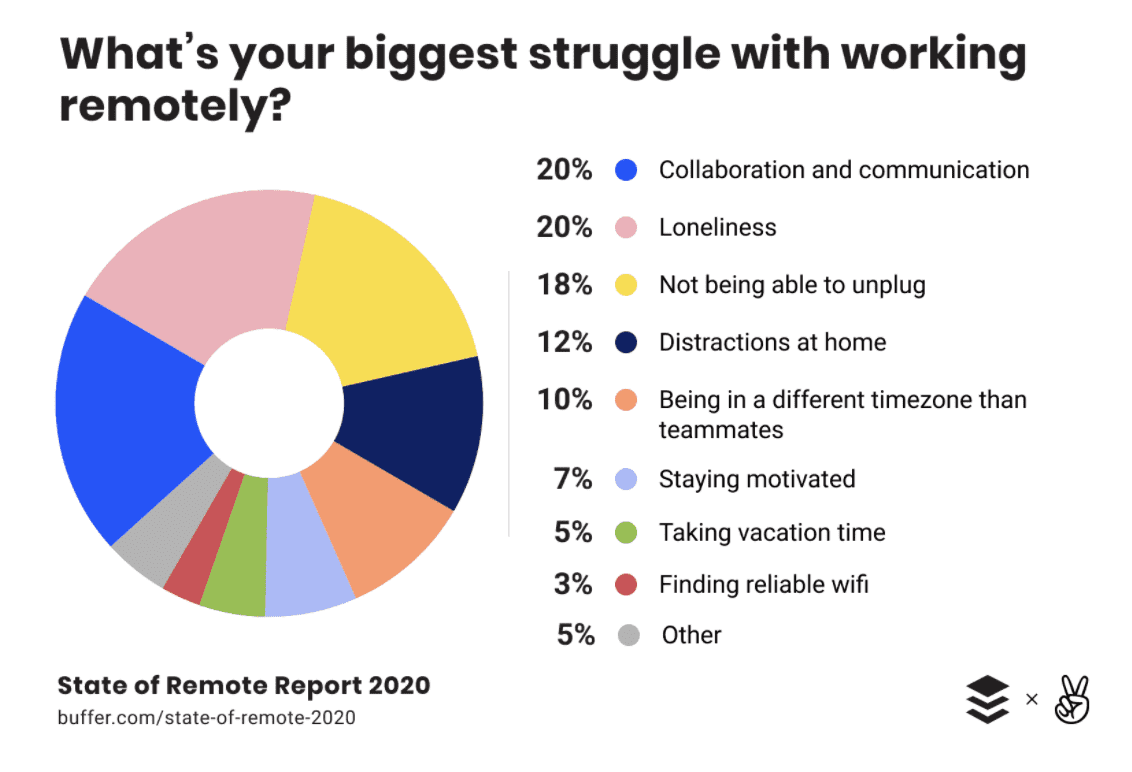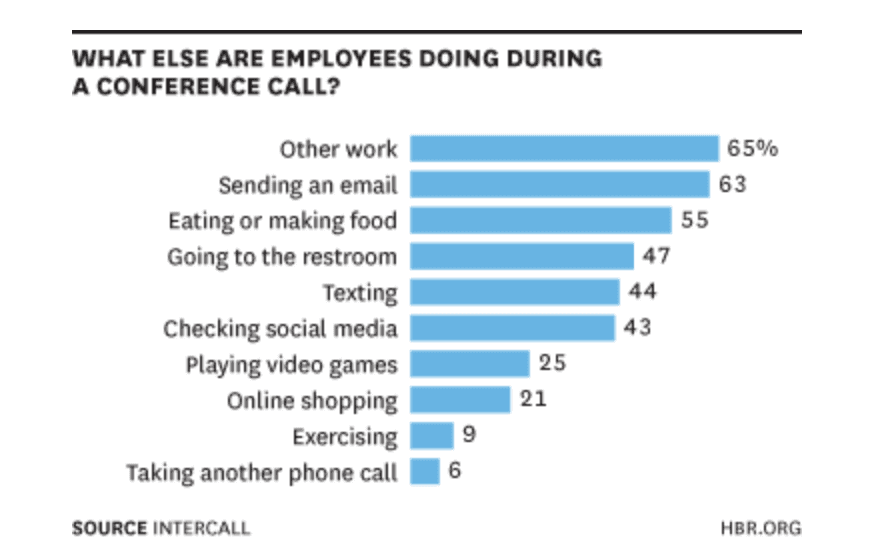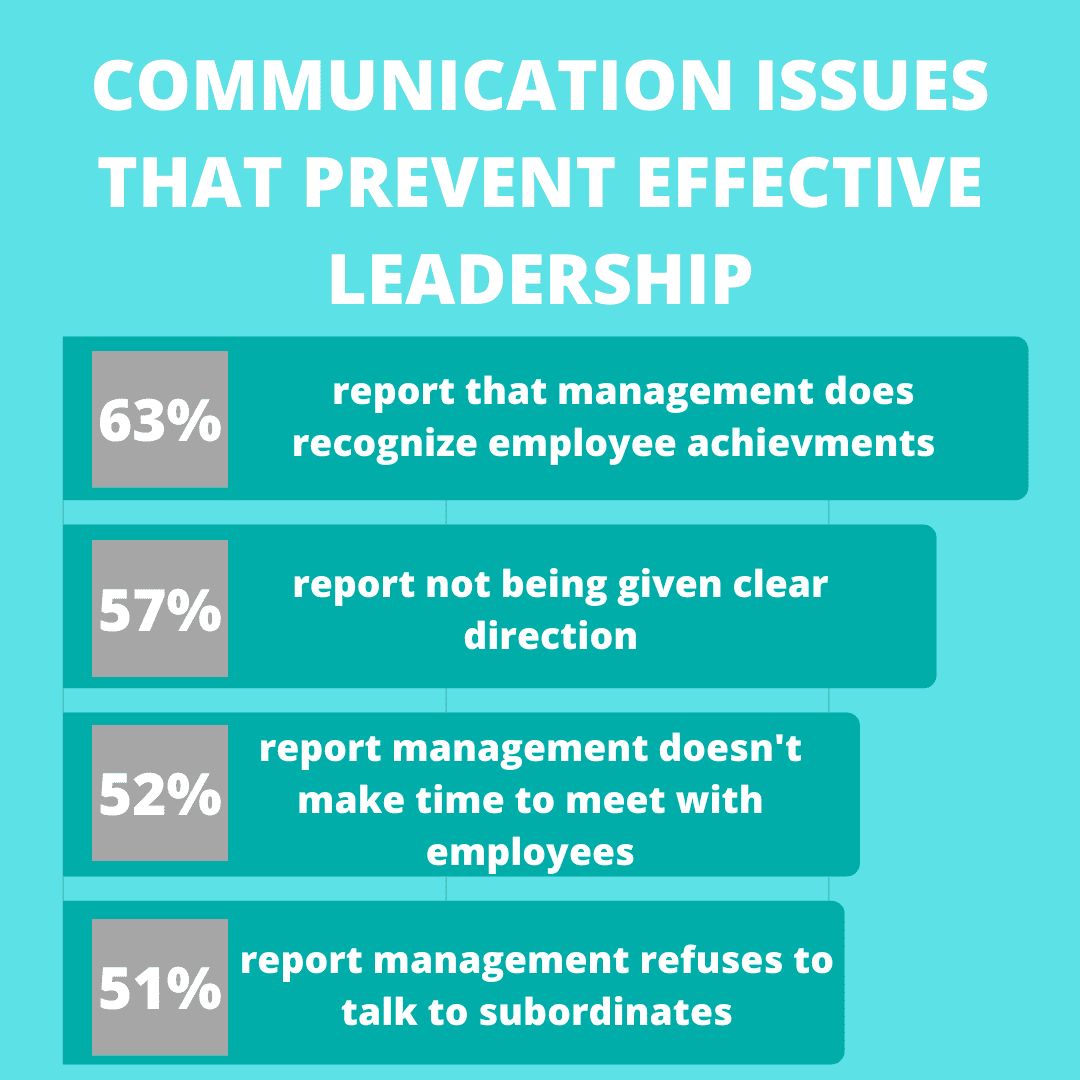I’ve been dealing with remote teams for over 20 years.
Throughout this time, I have been fine-tuning my process to make sure I can manage remote teams across the globe in different time zones and countries. I’ve read books on this topic, watched many videos, and experimented with different strategies to learn what works and what doesn’t.
If you’re having problems or concerns about managing a remote team, you’ve come to the right place. I know these problems. I’ve lived these problems. And I’ve solved these problems.
With teams going remotely today, more than ever before, I thought this would be an appropriate time to share my tips, tricks, and best practices for remote team management.
Challenges Associated With Remote Work
Some of you may be new to remote management, while others have managed remote teams in the past but didn’t have much success. Let me take a moment to quickly identify some of the problems and worries you might be feeling.
Is your team actually working? Are they working from home? Do they have family members and other distractions?
- Transparency — What is my team working on? How long does it take to finish a task?
- Availability — Will they answer when I call? If they don’t, are they out exploring nature?
- Misaligned Goals and Priorities — Are team members focusing on what I need them to focus on? Are they really working effectively?
These are all valid concerns. But in reality, these should be concerns whether your team is remote or not. If they only become concerns when you move to remote management, it means you have a flaw in your process.
Vulnerabilities in your process are self-corrected by the environment. Here’s what I mean:
In a face-to-face office environment, how do you know if one of your employees is working? You can take a peek over at their desk. If they’re at the desk, you assume they’re working. How do you know what they’re working on? Just peek over their shoulder and see the screen.
But as we all know, just because someone is sitting at their desk with some code or a spreadsheet on their screen, it doesn’t really mean that they are actually working. So it’s unfair to say that in-person management will automatically correct your concerns associated with remote employees—that’s simply not the case.
You need to figure out a process that works for your organization, whether your team is remote or not.
It Starts at the Top (With You)
In addition to the concerns you might have, take a moment to figure out the challenges your team might be facing. According to a recent survey, here are the biggest struggles of working remotely.

I get asked all of the time, “how do you manage remote teams that are thousands of miles away and make sure that they are consistently productive?” If you’ve read my blogs and watched my videos, you know that I prefer a mixture of local and remote resources. My teams are distributed on something called “the golden ratio.”
But not all of us have the luxury of employing local and remote resources. So we need to figure out a process that works for both—and it all starts with you.
Here’s some good news. If you’re reading this guide, it means you’ve already identified that this is a worthwhile cause and problem that must be addressed. Seeking information is the first step, so kudos to you.
What needs to change in your process?
Whatever that answer might be, you need to be disciplined about it. Own that initiative. Make sure it’s implemented throughout your entire organization.
It’s your job to get all managers and team members at all levels to buy-in to your new process.
Being disciplined could be as simple as making sure all meetings start on time and end on time. I can’t tell you how many companies I’ve dealt with that have a systematic problem where every meeting is late, causing all other meetings to be late, and nobody complains. It becomes part of the company culture, and it’s super frustrating.
Even small discipline levels like starting and ending meetings on time will go a long way for remote teams. If you can’t manage this properly, your problems will snowball at a higher level.
Communication
I know that this is a generic topic that everyone talks about, but it’s extremely important.
Great communication is measured by quality, not quantity. Overcommunication is a huge problem, but we’ll discuss that in greater detail shortly.
Let’s refer back to traditional office environments. Why do you think open concepts in workspaces have become so popular lately?

These floorplans encourage communication.
Even if you’re on your headphones all day and get up to grab a coffee or drink from the water cooler, you might hear your colleagues talking about something as you move past them on a shared desk. These subjects may or may not pertain to you now, but they’ll inevitably come back to you.
So all of this information gets absorbed as a community.
But you lose this concept when your team goes remote. So how do you compensate?
Hold all-hands meetings. This is a best practice for managing both local and remote teams alike. And to be clear, when I say all hands, I mean all hands on deck. Bring everyone into the team meeting. All levels of management, all resources, leaders, the CEO, and c-suite should all be attending.
What is the goal and vision of your company? What are the current objectives? How are these changing?
By discussing these at an all-hands meeting, everyone will understand what needs to happen. All departments will contribute and explain how they are striving to reach those goals and objectives. This will get your entire team rowing in the same direction to get where the whole group needs to be.
This helps your team understand the why of what they’re doing, and not just the what.
From time to time, you need to make sure that everyone is aligned and knows the north star. For remote meetings, these check-ins can happen over any digital communication method, like Google Hangouts, Slack, Skype, Zoom, or whatever communication tools you’re using.
I encourage your entire team to put an updated picture of their face on their profiles. This helps everyone look at each other as a real person. Avoid screen names; use your real name on everything. This helps everyone understand that they are real people, not just company resources.
Turn on your camera during video calls and video conferencing. Make sure your team can see you. Encourage them to turn on their cameras as well.
There is something called the 7-38-55 rule, created by Dr. Albert Mehrabian.

The model suggests that just 7% of communication is the words you use, and 38% is your tone. But a whopping 55% of communication is based on body language.
Whether you agree with those exact numbers or not, it’s clear that nonverbal cues are a huge part of effective communication. By turning on the cameras, everyone can see each other and fully understand these nonverbal cues.
This also forces people to get dressed up and presentable so they can be on camera. Some remote workers can feel depressed and stay in their pajamas all day. But to keep morale high, being camera-ready will make your remote team take a shower, get dressed, and take care of themselves.
The camera can ultimately become a virtual portal into the workplace.
Do NOT Overcommunicate
Overcommunication can be just as bad as no communication at all.
I’m referring to things like meetings that go on for too long, meetings that happen too frequently, excessive chatter on messaging channels, etc.
If a meeting can take 30 minutes, don’t stretch it to an hour. Otherwise, you’ll have participants zoning out and not paying attention. If someone doesn’t need to be at a meeting, don’t force them to be there.
Here’s a study that shows what people are really doing during conference calls.

In some companies I’ve worked with, I implement a mute hour throughout the day. Nobody is allowed to get on a chat channel unless it’s extremely urgent. This could be an hour, two hours, four hours, or whatever you decide per day.
I’ve even implemented policies like “no meeting Wednesdays,” where nobody can schedule meetings on a particular day of the week.
Both of these policies help people go into a deep state of work. If you have one full day without any meetings, that’s 20% of the week where everyone can dedicate to complete focus without distractions.
Process, Process, Process
I can’t emphasize this enough. You must have a process that encourages productivity, transparency, and accountability.
How do you know if your system and process are good or not? Simple—by the results.
Pick a process that works for you; you don’t work for the process. That’s how you vet out these mechanisms to see if they’re aiding your company or hindering you.
Personally, I recommend agile project management. It’s a common management methodology for software development teams.

This project management framework is meant to encourage productivity, transparency, and accountability. But it gives you the ability to stay agile and change directions, initiatives, and priorities on the fly.
I have a video on the Agile SCRUM methodology that you can check out for more details on this framework.
As with any new process that’s implemented in a business, it’s always important to ease in. Give yourself time so everyone can adjust.
The new process should include a daily standup meeting. Some people call them huddles, daily syncs, or daily check-ins (it doesn’t matter what you call it). But it happens every day, and it’s supposed to be really short—so short that people don’t feel the need to sit (hence the name).
Your team gets together, and everyone spends a couple of minutes explaining what they did yesterday and what they plan on doing today. This is an opportunity for people to express areas where they need help or assistance.
Now let’s circle back to one of our earlier talking points—change starts with you.
Make sure you’re disciplined enough to ensure this meeting is actually held every day. If you’re not around, make sure someone is doing it, like a project manager.
If the meeting is supposed to be at 9 AM, that’s 9 AM sharp—not 9:05 or 9:10.
Think of it like working out. The hardest part of working out is making it to the gym. So how do you make sure these meetings happen daily?
- Standardize
- Ritualize
- Optimize
If you do a daily standup meeting every day for weeks and months, it will eventually become muscle memory. Even if you’re on vacation or get sick, the meeting will still happen because it’s a daily ritual for your team.
Don’t try to fix everything on day one, or it will fall apart. Back to my gym analogy. If you try to lift too much weight on your first day, you’ll never be able to get where you want to go. Instead, you can start to optimize your process over time.
Autonomy and Accountability For Remote Work
The best remote teams are autonomous and are held accountable for their work.
When you give your team autonomy, it means that every single member has to take ownership for a particular task. They can complete it by themselves.
If you’re constantly looking over their shoulder and micromanaging, it becomes a major problem. Your team will get disconnected, and if things go wrong, they’ll give you an excuse like, “I just did what you told me to do.”
Any time you hear those words, it’s a big red flag and sign that you’re micromanaging too much.
Remote teams should be autonomous. Let them handle takes and take responsibility. Allow them to own those tasks and take pride in their work.
To hold them accountable, make sure you give them clear and measurable SMART objectives.

Make sure your requests are extremely clear. What does success look like? When is it expected? At the end of this deadline, it’s up to you to make sure your team is held accountable.
Here’s an example. Let’s say a developer is working with a product team to output a new feature that will boost sales. Once that feature is out, you must gather analytics to see if it actually increased sales or not.
Everyone needs to be held accountable for the decisions that are made.
Not so much for fear of repercussions. But more so you can know what worked well (and do more of that) and what didn’t work well (so you can do less of it). Ultimately, you can adjust accordingly so everyone gets better.
Tell the team that you win together, and lose together.
When team members find someone who is the weakest link that month, they can go and help that person. You might be the weakest link one month, but the next weak it could be me, and I’ll need your help. That’s how you build teamwork while managing remote employees.
Collaborative efforts when everyone has the autonomy to do their parts are crucial for managing successful remote teams.
Coaching and Nurturing
This is another important aspect for managing any team. But more often than not, you might forget about this (I know I’m guilty of forgetting too).
Every employee that I have (remote or not) has a very clear definition of their responsibilities.
You might ask yourself, “Shouldn’t it be obvious what a developer should do? Or a project manager? Or a designer?”
Grab any employee that isn’t doing well and ask them the definition of their job. Ask them about their responsibilities. See if their answer matches yours—it probably doesn’t.
Have a meeting and clearly explain what you expect from that employee. Give them five clear and measurable metrics that will allow them to succeed. Write them down and explain them in detail. Then on a frequent basis, score your employees on those metrics and provide feedback.
So many employees are surprised when they are let go because they weren’t given enough feedback to know they were doing poorly. They think they’re doing a good job, but they’re not—because nobody told them.
If you fire an employee and they are surprised, it’s a flaw in the management system.
Management should be able to explain problems BEFORE it’s too late. Tell them what they’re doing well, what they’re not doing well, and clearly identify your expectations. You still need to do this with remote teams to hold them accountable.
Acknowledge your team for a job well done. More than 60% of employees say that management does not recognize their achievements.

A simple “thank you” can go a long way.
When you recognize good work, it actually makes people more productive. In fact, 69% of employees say that they would work harder if they felt more appreciated. Another study suggests that 37% of employees consider recognition to be the most important part of management success. This ranked first on the list of responses.
Don’t be afraid to recognize team members amongst their peers or in front of the entire organization for a job well done.
Give them a shout out during the all-hands meetings (that we discussed earlier). Have an MVP, employee of the month, or whatever award works best for your company culture.
There are so many unsung heroes in tech. For example, there are countless QAs out there that make sure the products are great, but never get recognized for it.
Show your team that you understand how valuable they are. Say thank you, and give kudos on good work.
Conclusion
Remote working has become the new normal. Managers must be able to adapt accordingly to successfully manage remote teams.
At its core, remote management will encompass many of the same practices and management styles you use to manage a traditional office environment. You just need to apply those same strategies to your remote environment.
Even if it’s your first time working with a distributed team, you can still have success using my methodology for remote team members.
Trust me; as someone who has tried seemingly every remote management tactic under the sun, the tips and best practices described above actually work.
I hope this guide was helpful and gave you clear and logical steps for managing remote teams. Good luck!